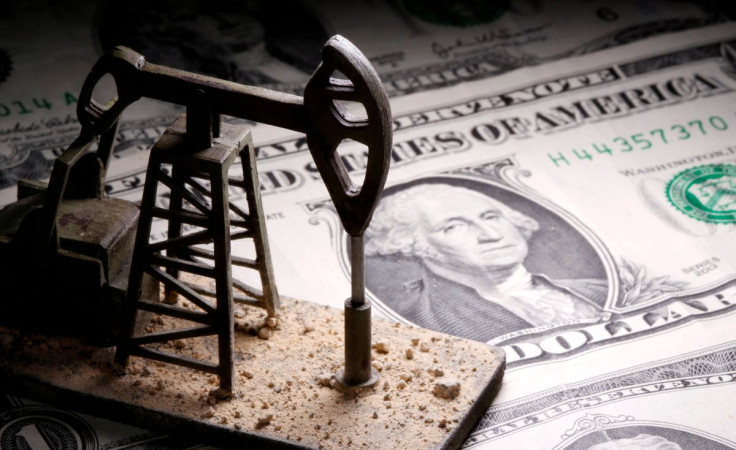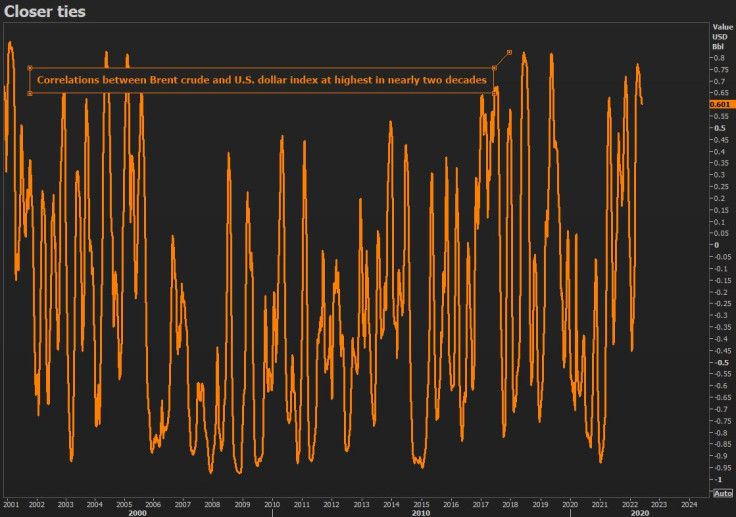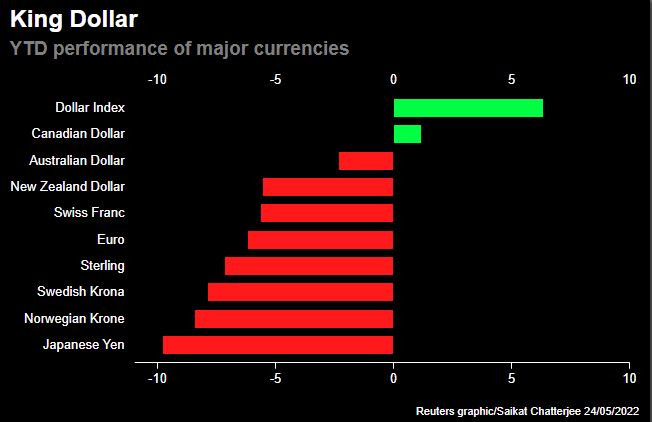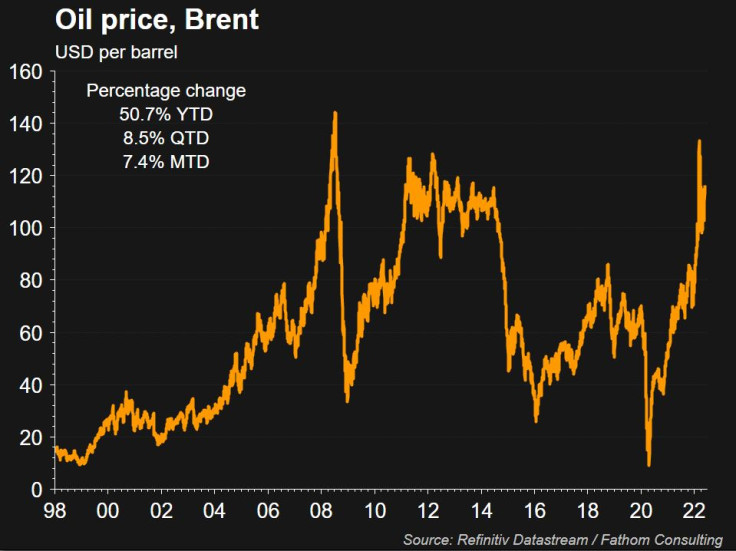Oil Snaps Inverse Dollar Link Leaving Little To Check Its Bull Run

Oil's bull run is taking little notice of the strong U.S. dollar, breaking crude's historical inverse link to the greenback and giving analysts confidence it has further to go based on current market fundamentals.
A strong dollar typically weighs on oil prices because it makes the commodity more expensive for holders of other currencies, potentially hurting demand for crude.
This time the dollar is being boosted by its safe-haven appeal as clouds gather over the economic outlook while oil is being driven higher by disruptions to Russian supplies linked to the conflict in Ukraine and strong demand, analysts say.
The dollar and oil have been moving in the same direction since late March, when the positive correlation hit its highest since May 2019, and analysts expect the link to persist given the tight oil market and broader risks to the global economy.
The usual inverse correlation between oil and the dollar had held fast for most of 2020 and into early 2021 as demand for crude was undermined by the global pandemic.
"Considering that spare capacity is low, there are likely larger supply disruptions ahead of us, and that oil demand will likely keep increasing, I would expect that oil will primarily be driven by its own fundamentals," UBS analyst Giovanni Staunovo said.
Brent crude hit a 14-year high above $130 a barrel in early March due to a tight supply outlook and expectations of significant disruptions to Russian oil output after Moscow sent troops into Ukraine on Feb. 24.
GRAPHIC: Revised correlation chart (

)
Oil is currently trading around $115 a barrel as demand concerns from COVID-19 related lockdowns in the world's top oil importer China and fears of a global economic slowdown tempered concerns about supply. [O/R]
JPMorgan expects Brent prices to average $114 a barrel over the second quarter as whole, surging to over $120 a barrel in the interim. The dollar index which measures the value of the U.S. currency against a basket of its rivals hit a two-decade high above 105 earlier this month and is trading less than 3% below those peaks.
High oil prices are threatening the global economic outlook and this in turn tends to benefit the U.S. dollar as it is widely seen as the safe-haven reserve currency of choice among investors. Russia expects its oil output to fall by more than 8% this year to 480 million to 500 million tonnes as Western sanctions against Moscow because of Ukraine make it harder to find buyers. The fact that the current energy crisis has been hitting Europe the hardest has also contributed to the disconnect between a stronger dollar and oil prices, analysts say. "Historically, energy crises and inflationary shocks were centred on the U.S. and hence dollar bearish," MUFG's head of emerging markets research, Ehsan Khoman said. Europe - which is the region most heavily reliant on Russian energy imports - is now the epicentre of the crisis, and grappling with wide energy trade deficits, he said. "As coal, gas and oil prices continue to remain elevated on supply scarcity, global growth ex-U.S. is suffering more than the U.S. economy, and by extension, the U.S. dollar is appreciating," Khoman said.
MUFG expects the divergence between the dollar and broader commodities besides oil to continue. Investec head of commodities Callum Macpherson says that oil's relation to equities was also breaking down. "Generally oil tracks closely to the S&P 500, but that correlation has disappeared completely, because high energy prices are tightening economic conditions," he said.
GRAPHIC: King dollar (

)
GRAPHIC: Brent price (

)
© Copyright Thomson Reuters 2024. All rights reserved.







